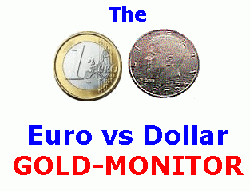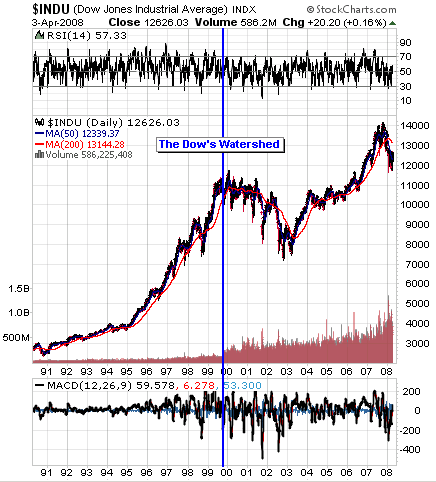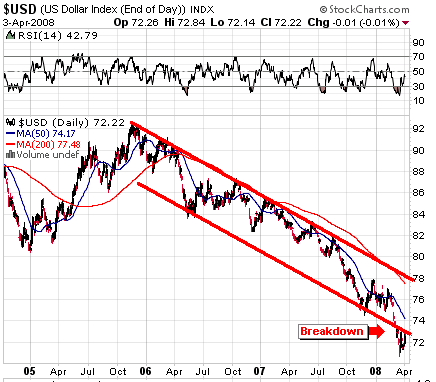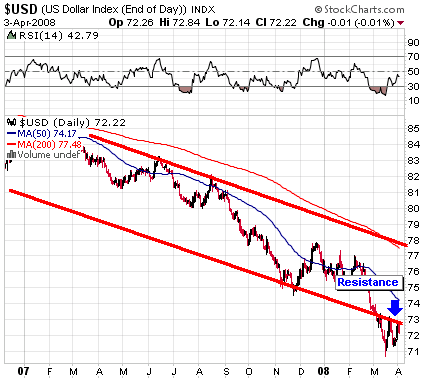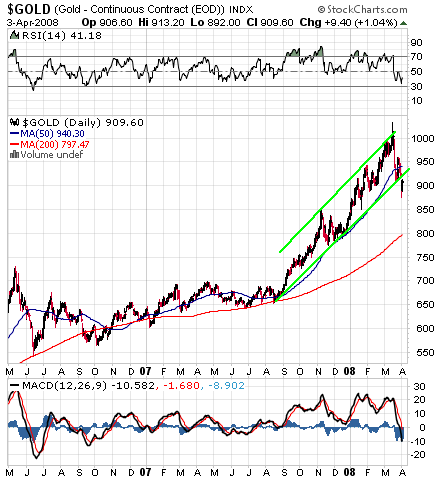|
April 2008 Issue (#45)The Fed’s Corporate Coup d’Etat - Continued9-11 was the excuse for Bush/Cheney’s arrogation of executive power in the name of “national security.” Bear Stearns now is Bush/Cheney’s excuse for transferring complete oversight over US financial institutions to the Fed in the name of "financial security." The result? Always the same - more power for our real masters (the money powers), and less privacy and fewer rights for the rest of us. Just like less than six weeks after 9-11 the administration had a “plan” ready for usurping pretty much whatever remained of individual liberty in the name of the fight against terrorism, so it came out with a “new” proposal for turning complete control of the US financial system over to the Fed only two weeks after the alleged trigger event. Neither of these “proposals" were made in response to the calamity or near-calamity that preceded them. There was simply not enough time to create such elaborate legal structures or regulatory frameworks in either case. Therefore, either both of these proposals were simply contingency plans prepared for insurance – or they were sitting there, just waiting for an excuse to launch them. I leave it to you to decide which case is more likely. Of course, in the case of the Fed’s takeover of the entire financial system, that was all Paulson’s idea. The Fed has nothing to do with it Right. Will Congress listen to Ron Paul’s advice when they deliberate whether they will delegate whatever remains of their constitutional role in the money-creation process to the secretive Fed? I seriously doubt it. The other Congressmen are too scared to bite the hand that feeds them endless amounts of monopoly cash. Congress might as well turn the rest of its legislative powers over to the Fed – which of course is where all of this is ultimately headed. The question is: What can you do about any of this? Well, for one, there is voting for Ron Paul in the general election in November. You see, there is this interesting development that the media has been absolutely terrified to report about. If the situation had been the reverse, of course, you can safely bet your house and everything you own that they would have pounced on Ron Paul like a pack of Hyenas. The End of McCainHere is what happened: Last year, McCain’s campaign was faltering. He applied for matching funds and was certified as eligible to receive them in August 2007. This allowed him to borrow money against his future eligibility for funds – which he did, in November, when he borrowed $3 million. In December, he borrowed another $1 million from the same bank. He also used his eligibility for matching funds to circumvent the normal ballot-access requirements of a number of states, thus getting on their ballots automatically, without having to collect the otherwise required amount of signatures. Having applied for federal matching funds subjects him to strict limits on how much he is allowed to spend in his primary election campaign. That limit is $50 million. Of course, since he started winning in new Hampshire, money is no longer his problem. His donations are way up from last year, and so he would like to avoid the spending caps he is now operating under. In February, he tried to withdraw his application for matching funds, but he hit two snags, namely (1) the fact that he did use his eligibility for the funds to obtain a loan, and (2) that the FEC currently has four vacancies on its normally six-member board, and therefore cannot act. In essence, he cannot withdraw his application unless at least 4 board members (a quorum) are present to vote on the decision whether or not to let him off the hook. That means, his attempt to withdraw is not capable of being effective until after the FEC officially lets him off - but the FEC cannot let him off for quite some time, until Congress fills its empty seats. Since he has already blown past the $50 million spending limit in February, he is now in violation of 26 USC Section 9035. Here is the kicker: 26 USC Section 9042 makes such a violation a criminal offense subject to a maximum of a $20,000 fines and/or 5 years in prison! McCain is currently trying to argue that the mere filing of his request to withdraw prevents the spending caps and criminal penalties from applying to him, but remember: he is technically incapable of withdrawing until the commission can rule on his application to do so. Otherwise, it would be like filing a petition in a civil lawsuit and arguing that such filing alone entitles you to win, without a trial and order from a judge. Forget about all of the currently circulating non-issue discussions of whether he can still claim to be the “champion” of campaign finance reform. The man is actually in big trouble with the law! He could be fined and imprisoned for violating campaign finance limitations. This can cost him his candidacy. Ergo: this election. Isn’t over yet. What’s the relevance to you and your investments? If McCain goes down, Ron Paul is the only man left standing out of the entire pack of eleven. If Ron Paul becomes our next president and isn’t 'forcibly removed' a la JFK, Congress will have a tough time getting any proposed expansions of Fed power past his veto pen. A Ron Paul presidency would also vastly improve the chances of getting our financial privacy back. Aside from that, the legal tender legislation would likely be removed from the books – you know, the statutes that prohibits the passing of gold or silver coins that are not American Eagles, and those that invalidate gold clauses in contracts, and those that tax precious metals for "capital gains." it would be a wholly different ballgame for gold and silver investors. Mr. Paulson's "Blueprint"Interesting is that Paulson even admits this thing has been in the workings for a long time. He states in his remarks on the blueprint for regulatory "reform." Let's go through them, one by one: “It's been a long road, as we began the process leading to this final report a year ago, in March of 2007, after convening industry leaders and policymakers for a conference on capital markets competitiveness.” What industry leaders? Which policy makers? We are not told. The next several paragraphs contain some tripe about how outmoded the old regulatory structure is, etc., etc. Then, it gets interesting – and frightening. In explaining his envisioned expanded role of the Fed, he summarizes: "The Fed would have the authority to go wherever in the system it thinks it needs to go for a deeper look to preserve stability. To do this effectively, the Fed will collect information from commercial banks, investment banks, insurance companies, hedge funds, commodity pool operators, but rather than focus on the health of a particular organization, it will focus on whether a firm's or industry's practices threaten overall financial stability. It will have broad powers and the necessary corrective authorities to deal with deficiencies that pose threats to our financial stability." When it comes to the true intentions of our “leaders”, it is safest to have very low expectations. Assume the worst – and it will likely come true. For example: When I heard the news and then read about it last weekend, I immediately assumed that it was designed to be a complete takeover of the financial system – and that’s what it turns out to be. What we are dealing with here is a form of financial "SS". Hitler’s “Schutz Staffel” by its very name claimed to have as its sole purpose protection. Security. What was not revealed by that appealing-sounding name was the question “protection of whom?” The name alone didn’t tell Germans, but the outfit’s actions surely did. Here, likewise, the reason for the Fed’s cosmetic enhancement procedure is ostensibly to “preserve stability.” Whose stability? Certainly not yours or mine. In fulfilling its mission, we are told the Fed will have “broad powers” (which ones?) and the “necessary corrective authorities.” Hmm, “authority” in the plural. What does that mean? And, what are “corrective” authorities? Power to take your property away from you and let the government handle it and run your partnerships and voluntary financial associations? In the name of “stability”, Paulson wants the Fed to have the power to look over every citizen’s shoulder, deep into his financial transactions. Private “commodity pools” (what are those?) will be as subjected to the Fed’s prying eyes to the same extent as the large banks are now. But, it gets better. Paulson tells us Bush wants to strengthen the authority of the plunge protection team (PPT) a/k/a the President’s Working Group on Financial Matters (PWG) Naturally, as that team was created by executive order, he wants to do it by executive order as well. No consent and advice from Congress. Well, as worthless and as rubber-stamping an institution as Congress has shown itself to be under either party’s leadership, Bush might as well. "It (the new executive order) will also increase the PGW membership to include all federal financial regulators so that information is shared in an appropriate, timely and efficient manner." In other words, as predicted from what little information the early press releases offered, a new financial Department of Homeland Security, with all its foibles and mismanagement. Just think “Katrina” or “airport security." In the British press, someone aptly noted that the Fed was the entity that failed to see the subprime crisis coming and quipped: “It’s like turning the public morals department over to Elliott Spitzer." You know what the PWG’s purpose was, so far: prevent any stock market crashes (i.e., any normal and healthy free market action) by clandestine buying of stock futures and selling of commodities futures to reverse or exaggerate existing tendencies in the market in the PWG’s desired direction. You could also call this the death of the free market. In the past, the PPT has done its level best to distort even the most robust functions of a free market and the pricing information a free market normally gives. Now, we will have an even more centrally controlled market economy. Reagan killed Soviet-style communism in Russia – and Bush brought it back from the dead, in a new, politically more correct form, right here in America. "One thing that the PWG will work on immediately is determining whether the government has all the tools and powers it needs to deal with a financial crisis." Meaning: if the PWG finds that the government is still lacking any of the power and control it wants, it will identify these and the government will simply assume them – by executive order. Paulson isn’t bashful about his intent to super-centralize all power, either. While laying the foundation for a federal takeover of all state-regulated mortgage lending, he tells us he has "concluded" that a very large percentage of subprime mortgage loans were "initiated by state-regulated entities." Well, duh! There are naturally many more state-regulated lenders than federally regulated ones. That’s just the nature of the beast when you have one federal government and fifty states. That fact alone says nothing about whether state regulated entities, by that very fact alone, are more prone to predatory or otherwise lax lending practices than federal ones. One need only think of the extremely lax lending the Fed has been guilty of that precipitated this entire mess. If the Fed hadn’t pushed and kept rates so low for so long (as low as 1 percent back in 2003-2004), none of this would have happened because it would not have been profitable for people to refinance their homes and spend their equity. Paulson’s response? "I have reviewed and analyzed a number of ideas to deal with this process. We thought quite seriously about federal preemption of enforcement authority but concluded in this case it was best to focus on the immediately achievable." That means if not now, federal preemption of all current state enforcement authority will come, no matter what. He just found it expedient to wait a little longer. How gracious. “Payment Systems Oversight”Next, Paulson goes for the jugular. You know what “payment systems oversight” means, right? He is talking about federal oversight over all payment systems by – guess who? I will let Hank explain it to you in his own words: "I am not intending to raise an alarm here. There is no crisis, but we should be proactive and address this issue. In our Blueprint, we recommend the creation of a federal charter for systemically important payment and settlement systems and that these systems should be overseen by the Federal Reserve. This will allow the Federal Reserve to guard the integrity of this vital part of our nation's economy. The fox and his goon squads patrolling the hen house; that’s what this boils down to, all over again. Did you think you have more privacy if you keep a GoldMoney or e-gold account and occasionally make payments through it? Tough! If Hank gets his way, it’s gone, brother! Very likely, the Fed with its new regulatory and oversight powers will ‘determine” that payments in gold constitute a ‘significant potential threat” to the “integrity” of electronic payment systems. Why? Well, it offers people an alternative to the otherwise vanishing dollar-based economy. The term “federal charter” in the above quote signifies that all payment systems that want to operate within the US or that want access to US customers will have to be federally “chartered” – which is just another term for federally licensed. What do you think are the chances of any online gold currency getting licensed by the US Fed? On the other hand, do you think that you are safer by keeping your wealth in US dollars,instead, just so you can avoid confiscation? Fat chance. The dollar is slated for destruction. The Fed will probably “determine” in the near future that a regional currency that encompasses a “broader” market than just the US alone will offer “more advantages” to consumers, and poof – the dollar is gone. Just like that. A Financial 'Department of Homeland Security'Want more evidence of the Fed’s total assumption (via its captive pawn, the federal government) of power over all aspects of free market functions? Look no further than the next segment of Paulson’s remarks. He will combine the CFTC and the SEC into a single – naturally more powerful – entity, but not just like that. Oh no. He will take an “evolutionary approach” to it, so as to make sure that no stone is left unturned in the fedgov’s grab for absolute power. He gloats: “In fact, the SEC and the CFTC have recently signed a mutual cooperation agreement that embodies the spirit of what the Blueprint is trying to achieve.” Thanks for telling us now, Hank! Next, just like mortgage lending, state-regulated insurance is relegated to the eventual slaughtering block. Insurance companies for now will have the “option” (how nice; a real choice!) to join a “federal insurance regulatory structure” and this federal agency will be housed in the building of the US Treasury Department to be “more effective” but, not to worry, that’s just a recommendation, thus far. For now, Hank wants a bifurcated system, much like the current part federal, part state-regulated banking system, but eventually he wants it all under one hat – the federal reserve hat, of course. The ResultThe upshot of all this is that the Fed wants centralized control over all aspects of market activity in the US. This will function as a “model” for other powerful central banks to do the same in their own respective regions and spheres of influence. By the way, if you wonder why I equate “the Fed wants” with “Hank Paulson wants”, I submit to you that Hank isn’t acting on his own here, and neither is the current US president. The marching orders for these two government offices have come from the Fed for a long, long time, since before the days of FDR. The Big QuestionThe big question is: can the Fed possibly succeed at controlling everything? The answer to that has already been provided, and it is a resounding “No.” Mother Russia has tried it under the old Soviet system, and desperately and utterly failed. The only reason the Fed has any claim to “success” thus far is because it has played a comparatively limited role in the markets, largely restricted to setting interest rates by manipulating the money-spigot. This means that whatever centralized planning function to Fed has fulfilled in the past did not interfere with the natural function of the markets to such a degree that productivity was choked off to the point of nonexistence. However, with the establishment of the plunge protection team and the idea that the Fed is powerful enough to guarantee the economy a ”soft landing”, this has changed dramatically – and we are now beginning to see the results of this. The premise underlying the very concept of a plunge protection team is a neo-capitalist version of the socialist bromide “a chicken in every pot” – and it exposes neo-capitalism as the economic farce it really is. When investors are collectively insulated from their dumb decisions, we no longer have a free market at work, no matter how much we would like to believe otherwise and no matter how much the media and college textbooks tell us otherwise. Well, as far as college textbooks go, they actually tell the real story, in a roundabout sort of way. They do tell students that truly free markets are “too dangerous” and that the Fed is there to make them “safe” for all of us. The PPT was conceived after the crash of 1987, when it became clear that the Fed alone could not do its job right. It needed help – and promptly got it from the then-president Ronald Reagan. As much as I loved the man, he was still on the Fed’s payroll, after all, just like most everyone in Congress since 1913. I remember when I first invested in gold in 1997 and the stock market started to crash. I was watching the TV screen, green as I was, eagerly anticipating the big payday. The Dow dropped a whopping 500 points. Pundits’ and news anchors’ faces on TV seemed rather taught. Trading curbs kicked in - and nothing happened. The following day the Dow roared back by 300 points, and then again by 200 or so, and the whole thing seemed like just a big bad nightmare that was now happily over. It was the PPT in action. Gold was already in a downtrend at that time, during the heyday of the gold cartel and producer hedging, and it continued on with its trend, unfazed by the drastic Dow volatility. On the day of the crash, gold stood still. The next day it rose a bit alongside the Dow, and then continued its penny-by-penny slide. Back then, intra-day movements of gold prices by less than 50 cents were extremely common. The message was clear: "Yes, Mr. Retail Investor, you can have your cake and eat it, too. Don’t worry. If you run out of cake, we’ll just bake you some more." The Dow’s WatershedSpeaking of which. Want some pretty graphic and visual proof of the PPT's actions? There is an unusual feature to the Dow’s long term chart that has puzzled me for quite a while, but I never spent long enough thinking about it to make any sense out of it, even though it is really quite simple. Take a look at this chart dating back to 1990.
There is a distinct disconnect between the volume levels of the Dow before and after the late 1999 top – or what probably would have been the top, had it not been for the PPT. At that time, the Dow’s trading volume doubled, virtually overnight, and it never went back anywhere near the previous level. In fact, Dow volumes have been rising phenomenally ever since. What can we conclude from that? I believe this indicates that the Dow wanted to fall, and fall big, back in the latter months of 1999 – but the powers that be didn’t want that to happen. What could be an explanation for such a disconnect between the “before” and “after” volume levels we see here? One way to interpret this is very simple. When a market “wants to fall” precipitously, people are selling in large numbers. Just in order to bring all of that selling back to “neutral”, i.e., to keep the market from dropping as it wants to, the authorities have to do a lot of buying. In fact, far more buying would have to take place than otherwise willing buyers would have done, or at least a lot more offering of money. If the authorities now want to push prices higher, they need to offer more and more money – and that gives unloading investors more of a chance to do more selling. It’s like a subsidy. Whatever you subsidize, you get more of it. Authorities buying when investors want to sell means more investors want to cash in on the suddenly improved offer price.Looking at how the volume levels have grown completely out of control since then, we can get a really good idea of the massive amounts of PPT buying that must have been taking place ever since, just to keep the Dow from taking its natural course.Although investors can be misled most of the time, its not that easy in dire situations. If you want to unload your stocks when you’re scared and you encounter a lot of buying at the time, you are tempted to sell more. Of course, every time this happens, the economy sustains long term damage like an athlete who takes painkillers to deal with a torn ligament instead of giving it rest, and like a binge drinker who cures his hangover with more booze. Everybody eagerly cooperates in this scheme because, after all, their own slice of the stock market pie is in danger as well. The officials who engineer these actions get to strut around like heroes, and everything is well. Well,… Until now, that is. Now, there is fear in US financial land. Real fear. The Paulson-China Hanky PankyHankieboy wants China to let its currency rise against the dollar. He wants it so bad that he says he will “never be satisfied” until the renminbi reflects full market valuation. (Did you ever notice that nobody calls it “yuan” anymore?)In doing so, Hank is making sure that Americans are getting hit with a double-whammy of price-inflation from two or more sources:
|





